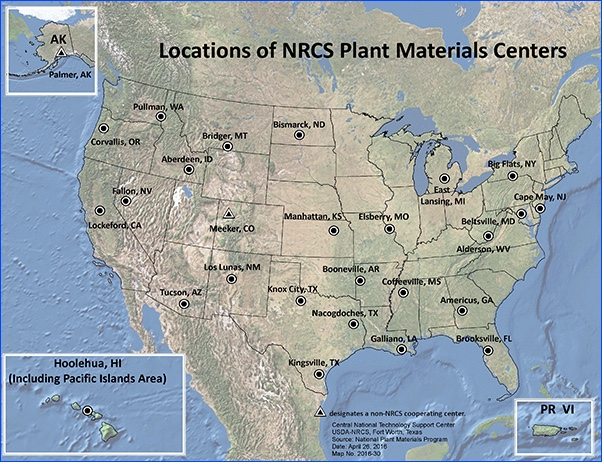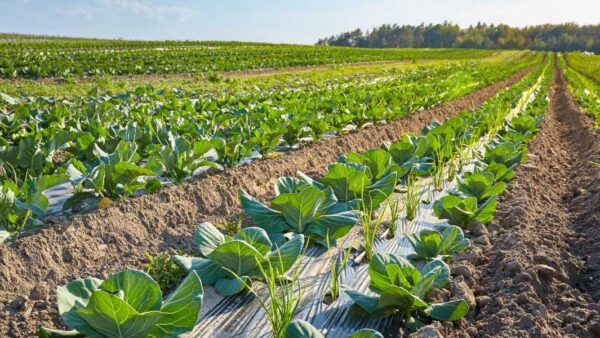New plant varieties provide environmental and commercial payback.
Scattered across the country, the U.S. Department of Agriculture’s Natural Resources Conservation Service (NRCS) maintains 25 Plant Materials Centers (PMCs) to find and evaluate grass, legume, forb, shrub and tree solutions to solve conservation problems and improve the use of natural resources.
PMCs often work cooperatively with state and federal agencies and universities. The commercial seed industry also plays an integral role in promoting the plants released by PMCs. Products developed by PMCs directly benefit private landowners as well as federal and state land-managing agencies.
“Sometimes it is lost on folks that when the conservation and native seed movement was in its infancy in the 1950s, the USDA PMCs helped jump-start that industry,” says John Englert, national program leader for USDA-NRCS Plant Materials.
The industry has evolved, and there are many more organizations developing plant materials these days.
“Private companies can often bring new seed material to market faster than PMCs, which works very well for more local and regional sources for restoration,” Englert says, noting that there is still a need for PMCs to select new plants, especially where sources don’t exist or when specific characteristics are needed. Before a PMC releases a new plant, it is evaluated to determine where and how it can best be used.
“PMC plant releases have known characteristics and proven soil and water conservation uses when used in their areas of adaptation.”
Positive Returns
Annual PMC appropriations peaked at $11.7 million in 1994, but have since leveled off. The 2017 budget is $9.4 million, which supports 25 PMCs and 75 full-time employees plus seasonal help.
An economic analysis published in 2005 compared the costs and benefits of federal funding for PMCs from 1935 through 2005. The study concluded that for every dollar allocated to the program, it returned $3.65 in benefits to plant cultivars for their ecological service and net benefit to commercial producers.
“Although this study is more than 10 years old, it is still the best analysis available,” Englert says. “If the same analysis were performed today, the results would be similar, possibly even a little stronger.”
NRCS has released 740 plants to the public in the past 80 years, and nearly 600 of those are still commercially produced. PMC plant releases are one of the primary tools for natural resource conservation and restoration in the United States.
In recent years, NRCS has revitalized the efforts of PMCs to more closely align PMC activities with its needs to ensure that conservation practices are scientifically-based. Much of the PMC work develops recommendations to meet emerging natural resource issues. There are still significant efforts to develop new sources of native plant materials, but in many cases, there is a higher need to evaluate how existing plant materials can be used, or how to more efficiently establish and manage them.
“Several years ago, we had a big push for pollinator habitat,” says Wayne Duckwitz, PMC manager in Bismarck, North Dakota. “Many PMCs have released regionally appropriate wildflowers to support this effort. We also develop methods for seeding pollinator friendly plant species, and increasing the diversity of existing grass plantings.”
For the NRCS soil health initiative, PMCs are determining cover crop species and varieties to use as well as methods for planting and terminating cover crops.
“We are using the network of PMCs to evaluate about 60 selections of commercially available cover crops, to determine where the different materials are adapted and how they can best be used in cropping systems,” says Alayna Jacobs, PMC manager in Coffeeville, Mississippi.












